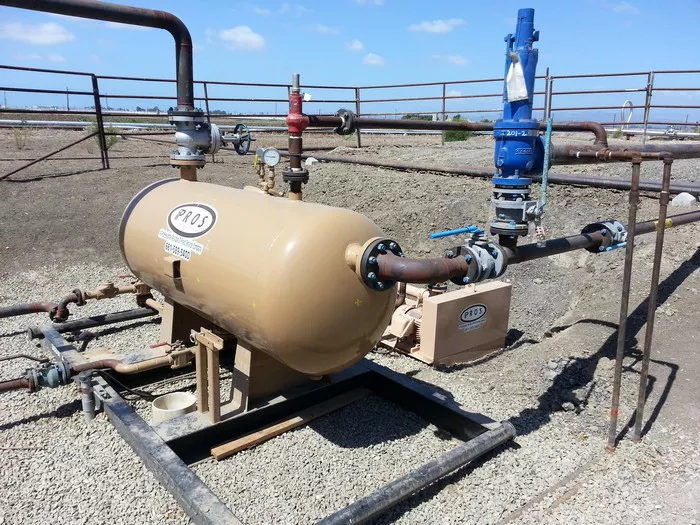Wet scrubbers play a crucial role in various industries where air pollution control is a concern. They are highly effective at removing harmful pollutants from exhaust streams, making them an essential component of environmental protection strategies. In this guide, we’ll delve into the workings of wet scrubbers, exploring their mechanisms, types, applications, and benefits.
Understanding Wet Scrubbers
Wet scrubbers, also known as wet gas scrubbers or air scrubbers, are air pollution control devices used to remove pollutants from industrial exhaust streams. These pollutants can include particulate matter, gases, and vapors. Wet scrubbers utilize a liquid (often water) to capture and neutralize pollutants, effectively cleaning the exhaust before it is released into the atmosphere.
Mechanism of Operation
Wet scrubbers operate on the principle of absorption and/or adsorption. When contaminated gas enters the scrubber, it passes through a liquid spray or bath, where pollutants are absorbed or adsorbed by the liquid. The liquid, now containing the pollutants, is then collected and treated, while the cleaned gas exits the scrubber.
Key Components of a Wet Scrubber
1. Inlet/Intake: This is where the contaminated gas enters the scrubber.
2. Scrubbing Section: This is the heart of the scrubber, where the gas comes into contact with the liquid (scrubbing medium).
3. Mist Eliminator: Used to remove any liquid droplets from the cleaned gas before it exits the scrubber.
4. Outlet/Exhaust: The cleaned gas exits the scrubber from this point.
5. Pump and Recirculation System: Responsible for circulating the scrubbing liquid and maintaining its concentration.
6. Monitoring and Control Systems: Ensure optimal performance and allow for adjustments as needed.
Types of Wet Scrubbers
1. Venturi Scrubbers: Utilize a constriction to create a pressure drop, causing pollutants to be captured by the scrubbing liquid.
2. Spray Tower Scrubbers: Contaminated gas is passed through a spray of scrubbing liquid, where pollutants are absorbed or entrained.
3. Packed Bed Scrubbers: Utilize a bed of packing material (such as plastic or metal) to increase contact between the gas and scrubbing liquid, enhancing pollutant removal.
4. Cyclonic Scrubbers: Use centrifugal force to separate pollutants from the gas stream before they are absorbed by the liquid.
Applications of Wet Scrubbers
Wet scrubbers find application in various industries, including:
1. Manufacturing: To control emissions from processes such as metalworking and chemical manufacturing.
2. Power Generation: To remove pollutants from flue gases produced by boilers and incinerators.
3. Mining: To control dust emissions from crushing, screening, and conveying operations.
4. Waste Management: To treat exhaust gases from waste incineration facilities.
5. Petrochemical: To capture volatile organic compounds (VOCs) and other pollutants.
Benefits of Using Wet Scrubbers
1. Effective Pollution Control: Wet scrubbers can achieve high removal efficiencies for a wide range of pollutants.
2. Versatility: They can handle both particulate matter and gas-phase pollutants.
3. Low Maintenance: With proper design and operation, wet scrubbers can require minimal maintenance.
4. Compliance: Help industries meet environmental regulations and emission standards.
5. Reduced Environmental Impact: By removing pollutants from exhaust streams, wet scrubbers contribute to cleaner air and a healthier environment.
Conclusion
Wet scrubbers are indispensable tools for mitigating air pollution in various industries. By understanding their mechanisms, types, and applications, industries can make informed decisions regarding the implementation of air pollution control strategies. With ongoing advancements in technology and increasing regulatory pressure, wet scrubbers are poised to remain vital components of environmental protection efforts worldwide.
FAQs
Q1: What pollutants can wet scrubbers remove?
A1. Wet scrubbers are capable of removing a wide range of pollutants, including particulate matter, sulfur dioxide (SO2), nitrogen oxides (NOx), volatile organic compounds (VOCs), and hazardous air pollutants (HAPs).
Q2: Are wet scrubbers energy-intensive to operate?
A2. While wet scrubbers do require energy for operation, advancements in design and control systems have led to increased efficiency and reduced energy consumption. Additionally, the benefits of pollution control and regulatory compliance often outweigh the energy costs.
Q3: How do I choose the right wet scrubber for my application?
A3. Selecting the appropriate wet scrubber involves considering factors such as the type and concentration of pollutants, gas flow rate, space constraints, and regulatory requirements. Consulting with an experienced engineer or environmental specialist can help determine the best solution for your specific needs.

